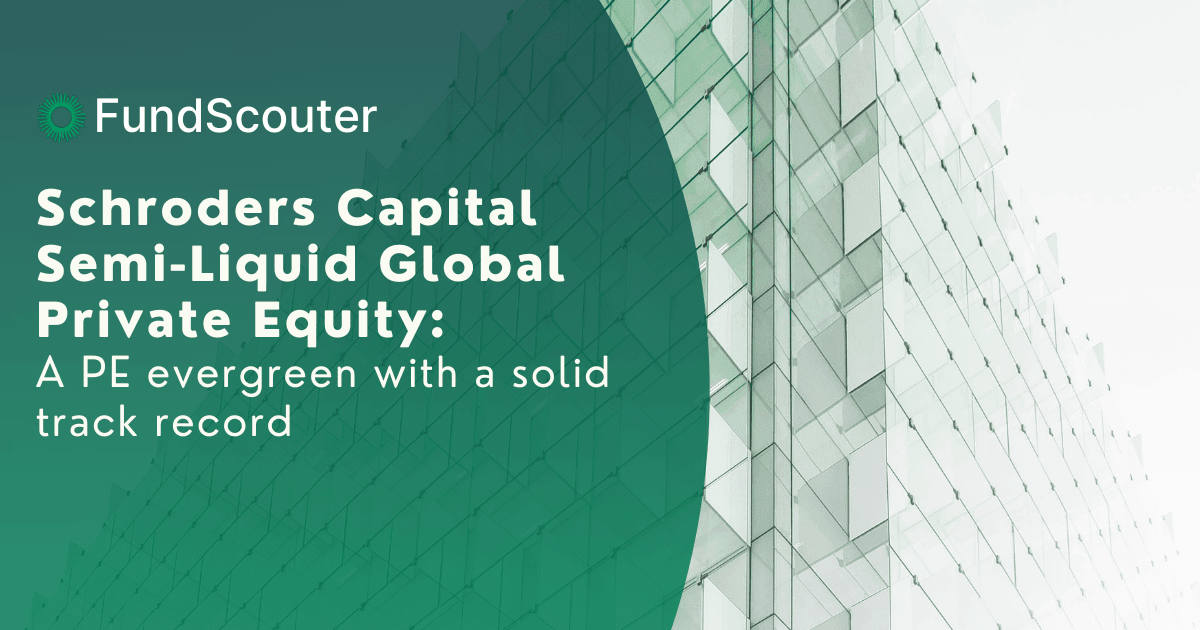For investors seeking diversified private equity exposure with semi-liquid features, Schroders’ Global Private Equity Fund (here described: Class C Accumulation USD, ISIN: LU2005485581) offers a structured yet flexible approach. Here’s a detailed analysis of its strategy, performance, and market positioning, supplemented with broader industry context.
Investment Strategy & Market Context
The fund targets capital growth by investing globally across private equity strategies, with allocations heavily skewed toward buyouts and some other PE / VC asset classes. Unlike traditional closed-end private equity funds, Schroders employs a semi-liquid structure, allowing quarterly redemptions—a feature now more and more popular among investors seeking private market exposure without decade-long lockups. The fund’s 82.75% investment level (as of early 2025) suggests active capital deployment, though it retains liquidity for opportunistic deals and redemptions.
Liquidity Mechanics & Trade-offs
Now that semi-liquid private equity funds have surged in popularity, Schroders’ has contributed to setting the standards:
Redemptions: Quarterly, with a90-day notice periodand a5% of NAV cap per quarter(pro rata scaling if oversubscribed).
Subscriptions: Monthly, with a €/$10,000 minimum.
Performance & Fees in Perspective
Returns: The share class delivered 97.3% cumulative net returns since inception (2019), with 13.9% in 2023—outpacing many indices. Of course, it is still lower than the reported IRRs of top quartile buyout funds, but they differ fundamentally in their structure and cannot be easily compared on IRR.
Fees: A 3.28% ongoing charge is not atypical for semi-liquid PE funds and no performance fees are levied.
Key Risks & Investor Suitability:
Final Verdict
Schroders’ fund is apragmatic middle groundbetween illiquid PE and daily-traded alternatives. Its strengths—diversification, no performance fees, and disciplined liquidity terms—make it a viable option for investors seeking private equity exposure without sacrificing too much liquidity. Its track record provide some level of comfort in that this model works and that portfolio management has been strong.
But Schroders also stands out for its early recognition of investor demand for semi-liquid private market access. While competitors have since launched similar products, Schroders’ 2019 inception date gave it a head start in refining its approach—particularly in balancing liquidity constraints with private equity’s long-term return profile.
Why Schroders’ €100bn+ AUM Platform Matters
Decades of Private Markets Expertise
Schroders Capital (formerly Schroder GAIA) has been active in private equity since the 1990s, building a global network of GPs, co-investment opportunities, and secondaries market access.
Unlike newer entrants, Schroders leverages its proprietary deal flow, particularly in Europe (half of the fund’s holdings), where its longstanding presence provides an edge in sourcing off-market transactions.
Integrated Asset Management
As part of Schroders’ multi billion AUM platform, the fund benefits from cross-asset insights—especially valuable in today’s market, where private equity performance increasingly correlates with public market trends (e.g., IPO exits, refinancing risks).
Pioneering Semi-Liquid Structures
Schroders was among the first traditional asset managers(vs. pure-play PE firms) to offer quarterly redemptions in private equity—a move that anticipated the retailization of private markets. Its 90-day notice period and 5% quarterly redemption cap have since become industry standards.
